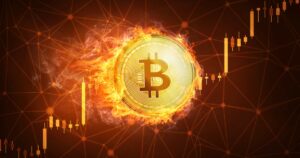It’s not complicated. Ordinary people want to buy more stocks in their retirement accounts only after the stock market has risen a long way.
It’s basic psychology. We are chimpanzees, chimpanzees are pack animals, and our deepest instincts make us want to run with the pack. (OK, technically a pack of chimps is called a “troop.”) So we see stories on our addictaphones, on the TV, and on those stupid screens in the elevator at work telling us the market is up yet again, and we are hit with terrible fear of missing out.
It’s been happening again. Before Wednesday’s sharp selloff, the news had been reminding us that Wall Street had been ratcheting up a string of “winning days” and “winning weeks.” The S&P 500
SPX
has risen 15% just since late October. The tech-heavy Nasdaq Composite
COMP
has risen just under 20%. And then there’s the enforced good cheer associated with Christmas and the so-called Santa Claus rally.
It’s no wonder people are getting sucked in. And how! BofA Securities just reported a client stampede into the market: The fourth-biggest inflow on record, it says. The mutual-fund industry says much the same: big inflows into the stock market via mutual funds and ETFs in recent weeks, including a net $11 billion last week and $31 billion since the start of November.
Read: These are the most hated assets on Wall Street — it might be the perfect time to buy them
Meanwhile, institutional money managers — the committees running big pension funds, endowments and the like — have also been buying aggressively. They now hold the highest share of their portfolios in the stock market since early 2022, according to the most recent survey. They are especially overweight U.S. stocks.
What could go wrong? Plenty. The same global fund-manager survey shows that fund managers are already expecting a weaker economy next year, even though they have also been buying stocks. The reason for this paradox is that they think interest rates are going to collapse, making money cheap again and presumably driving another stock-market bubble.
But we may already be in one. A fascinating new research note from Albert Edwards, a strategist at SG Securities, shows that technology stocks already account for about the same share of the total U.S. market as they did at the peak of the infamous 1999-2000 dot-com bubble.
“U.S. tech stocks now comprise almost one-third of U.S. market capitalization,” he writes. “So, 2024 begins with the U.S. tech sector accounting for as much of the U.S. broad market index as it did for a few months of madness in the summer of 2000.”
The sector trades at 27 times forecast earnings, compared with 20 times for the rest of the market: That, too, is a gap not seen since the crazy days of 2000, he writes. This alone poses a massive risk to the market, he argues.
“If I had to warn of one seismic shock for 2024 that would shake investors to their core, it is not whether the U.S. or China does or doesn’t go into recession or if inflation and interest rates are a bit higher or lower than expected,” Edwards writes. “No, the biggest surprise that could send a shockwave through portfolios is the U.S. IT market cap bubble bursting and tipping the entire U.S. market into a slump.”
Edwards is generally seen as a permabear on the Street. But you can’t argue with facts.
Meanwhile, the most recent fund-manager survey shows effectively a universal consensus that interest rates are coming down next year, and coming down a long way. The danger with a situation like this is that if everyone has already factored plunging rates into their plans, they are highly vulnerable to a nasty surprise.
We already know that ordinary investors generally buy and sell stocks at the wrong time. Research company Dalbar has shown that over 10, 20 or 30 years, the average fund investor has ended up earning far less than a buy-and-hold investor precisely because they buy when the market is up and sell when it has fallen. The Investment Company Institute, which reports a recent flood of investor purchases of stock-market funds, also reports that the public was selling its stock-market funds during the slump in August, September and October — before prices started rising.
It is rarely a good idea to be too bearish. Stocks have outperformed bank deposits, bonds and anything else by a country mile over the very long term. U.S. large-company stocks, as measured by the S&P 500, have earned an average return of nearly 10% a year since the 1920s, compared with less than 7% a year for corporate bonds, less than 5% a year for U.S. Treasury bonds, and a little over 3% a year for short-term deposits. The standard recommendation is that anyone expecting to retire years — let alone decades — into the future should have most of their portfolio in stocks.
On the other hand, when everyone else is bullish, the market has risen a long way really fast, and Joe Q. Public is aggressively chasing the rally, it is a good time to remember the potential downsides.









